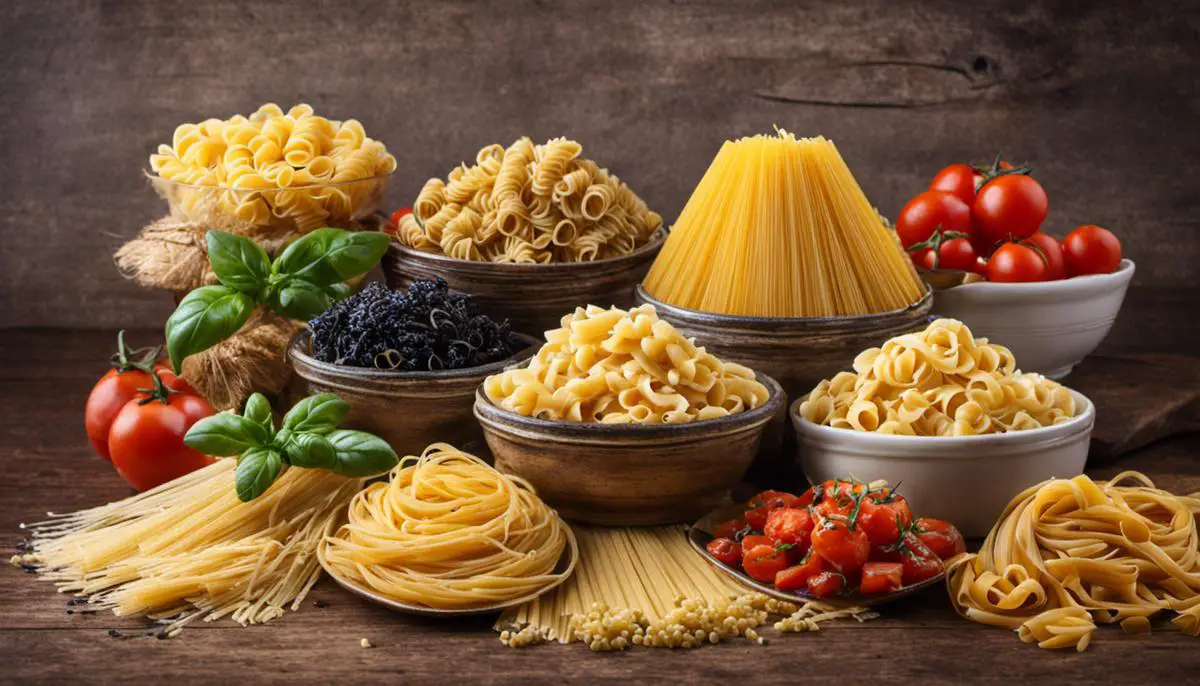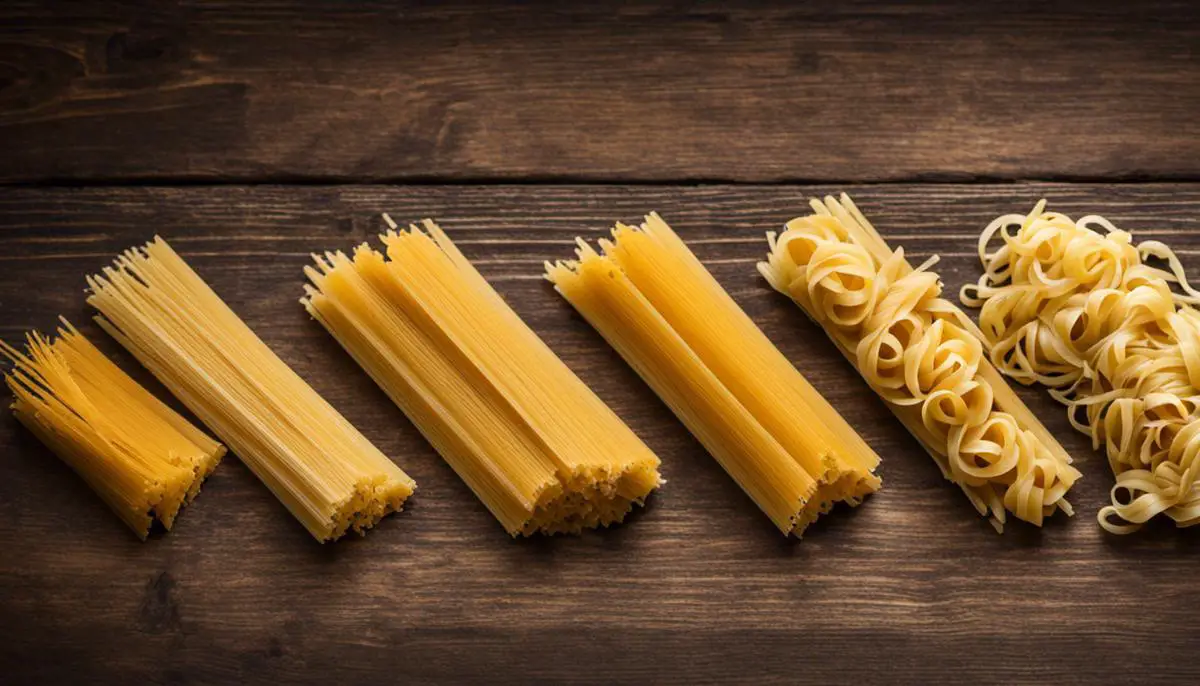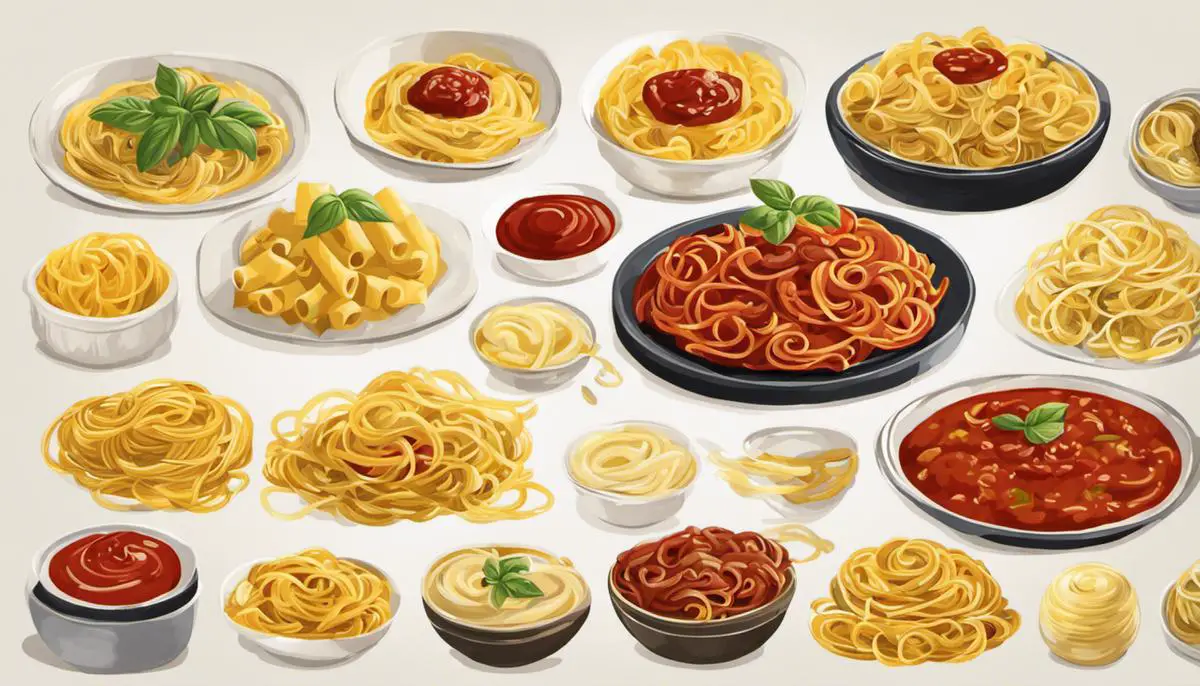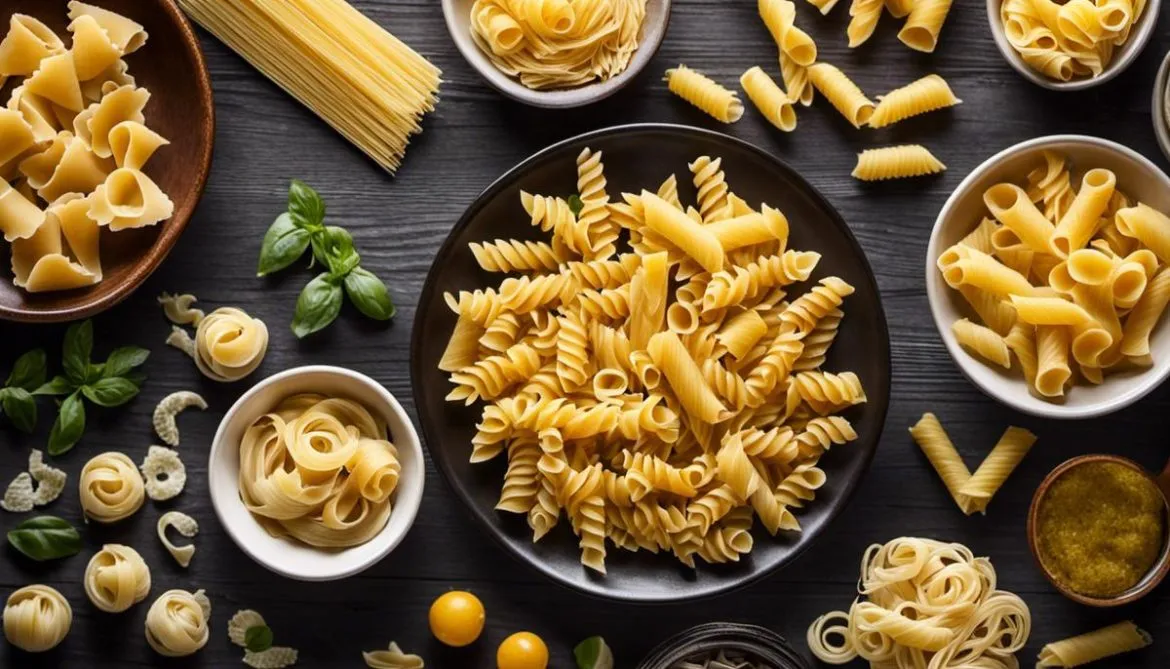Table of Contents
Ever wonder why there are so many varieties of pasta on your grocery store shelves and in your favorite Italian dishes? As comforting and universally loved as pasta is, it is a natural curiosity to understand it better. The world of pasta is indeed vast and varied, rooted deep in the history of different cultures, which resulted in a myriad of shapes and sizes. This fascinating journey through the rich tapestry of pasta will not just acquaint you with its vibrant history and the art of its creation, but also with the deliciously vast range of pasta types and their best pairings with sauces.
Understanding Pasta Basics
Historical Origin of Pasta
While most commonly associated with Italy, pasta traces its roots back to ancient civilization. The earliest forms of pasta were likely made in China, as long as seven thousand years ago, where wheat noodle remains have been found. It is speculated that merchant Marco Polo introduced pasta to Italy during the 13th century after his travels to China. From there, the Italians developed a passion for pasta, creating various kinds and incorporating it into their daily cuisine.
Ingredients and Procedure of Making Pasta
The main ingredients in traditional pasta include flour, eggs, and salt. The type of flour can differ – from semolina, a coarse flour made from hard durum wheat, to ’00’ flour, ultra-finely ground wheat flour. Making pasta generally entails mixing the flour and eggs into a stiff dough, resting it, rolling it out, and then cutting or shaping it.
Some pasta varieties like whole wheat pasta, incorporate other grains while others like gluten-free pasta, use alternatives to wheat. There are also filled pastas such as tortellini and ravioli, which require an additional mix of ingredients, most commonly cheese, vegetables or meats for the filling.
Different Types of Pasta
The appearance and texture of pasta can vary widely, leading to a vast array of pasta types. Some pasta is shaped into long, thin strands like spaghetti, fettuccine, and linguine while others are formed into short tubes or spirals like penne, fusilli, and rotini. Stuffed pasta like ravioli and tortellini contain a filling, sealed between two sheets of pasta dough. Gnocchi, although often included in discussions about pasta, is a bit different, as it is traditionally made with potatoes.
Nutritional Value of Pasta
Pasta is primarily a source of carbohydrates, providing energy for the body. It also contains a moderate amount of protein, especially if made with high-protein flours such as semolina or if eggs are used in the pasta dough. Whole wheat pasta provides dietary fiber and nutrients such as iron and B vitamins. You can also find pasta enriched with additional nutrients like folic acid.
Pasta and Dietary Practices
Pasta has a place in many different diets. In Mediterranean diets, it is often a key component, typically served with plenty of vegetables, healthy fats, and lean proteins. Vegetarians and vegans can often enjoy pasta as well, as most dried pastas do not contain animal products. Gluten-free options are now available for those with celiac disease or non-celiac gluten sensitivity, often made from grains like rice, corn, or quinoa. There are even high-protein, lower-carb pasta options on the market for those following specific macronutrient diets.
The Reasoning Behind Different Pasta Types
Ever wondered why there are so many different types of pasta? A large part of this variety results from regional influences and specific dietary requirements. The pasta’s shape plays a significant role in how it interacts with sauces. For instance, ridged or hollow pasta shapes are known to grasp onto chunkier sauces very well, while smoother, slimmer pasta types often pair best with lighter sauces that are oil-based. Certain shapes are traditional specialties of specific regions, commonly combined with local ingredients. Additionally, advancements in food technology have given rise to new pasta varieties designed to meet specific dietary needs, such as gluten-free or high-protein alternatives.

Classification of Pasta Types
How Pasta is Classified Based on Shape and Size
From small to large, pasta ranges in countless shapes and sizes, each masterfully designed to match specific sauces or ingredients certain dishes call for. The smallest varieties, including orzo, are grain-like and best suited for dishes like soups and salads. Mid-sized shapes like farfalle (bow-tie pasta) or rotini (spirals) are quite versatile, standing up well to dense vegetable or meat sauces. On the other hand, large-format pastas, such as cannelloni, take the form of large tubes that can be amply filled with delicious ingredients like spinach or ricotta. Flat, ribbon-like pasta, including linguini and fettuccine, are a dream match for cream-based sauces, while slender long pasta like spaghetti pairs excellently with simple pomodoro (tomato) or aglio e olio (garlic and oil) sauces.
Classification by Origin
Pasta is a staple in many different regional cuisines in Italy and each region boasts its unique pasta creations. For example, Emilia-Romagna is known for its egg-based pasta, tortellini, stuffed with a mix of meats or cheese. Puglia, the heel of Italy, is where orecchiette (little ears) originate, traditionally served with broccoli rabe or rapini. Liguria, in the northern part of the country, is famous for its traditional trofie pasta, typically served in a pesto sauce.
Classification by Ingredients
The most common type of pasta is made from durum wheat flour and water, but other ingredients can also be used. Whole-wheat pasta incorporates whole grain for a more fibrous, nutty taste. Spinach or tomato pasta includes those respective ingredients for added flavor and color. More unusual ingredients such as squid ink can be used to make an inky-black pasta that’s often served in seafood dishes. Egg pasta, richer and more tender than regular pasta, is another popular variety.
Classification by Preparation Techniques
Finally, pasta can be classified by the way it’s prepared. Most pasta is extruded, meaning it’s forced through a die to create its shape and then cut into lengths before being dried. Varieties like farfalle and radiatori are examples of molded pastas, which are shaped by hand or machine. Fresh pasta is generally rolled and cut, as in the case with fettuccine, or filled, as with tortellini or ravioli. Fresh pasta has a shorter cooking time and a different texture, unlike its dried counterpart.
Discovering pasta involves understanding more than the simple types or shapes. It’s about acknowledging the intricacies that separate one pasta from another, such as the type of wheat used in its creation or the specific drying technique employed. The art of perfectly pairing a pasta type with its ideal sauce or cooking method spans back to centuries of traditional culinary practices. It’s an engaging exploration when you bring these time-honored combinations into your own kitchen.

Pairing Pasta and Sauces
Delving into the world of pasta can drastically improve your culinary expertise. Each pasta shape graces a specific type of sauce for some other reason than a mere whim. Factors like the texture of the pasta, its surface area, and its capacity to retain or absorb a particular sauce, play a critical role in this pairing. Understanding these delicate relationships can immerse you even more deeply into the art of pasta and sauce pairing.
Types of Pasta and their Sauce Pairings
Firstly, we have the all-time favorite, spaghetti, considered the most versatile pasta shape. It pairs beautifully with almost any kind of sauce, but the most traditional ones are tomato-based marinara sauces or Bolognese, a rich meat sauce. The long, thin strands of spaghetti are excellent at picking up both heavier and light, delicate sauces.
Next, the hollow-centered pasta types – Penne, Rigatoni, Macaroni. The tube-like pasta shapes are perfect for dense, hearty, chunky sauces like Bolognese and Vodka sauce, as the hollow center traps the sauce inside. In particular, Rigatoni with its large diameter and ridges, can also work well with cream-based sauces or even a simple butter and cheese sauce.
Then there’s Farfalle, the unique bow-tie pasta, which is perfect for lighter, oil-based sauces or basic tomato sauces. The chewy center and flared ends of Farfalle pasta can create an interesting texture combination when paired with a light, chunky vegetable sauce.
Moving on to Fusilli and Rotini, or our spiral-shaped pastas, go great with pesto and lighter tomato sauces. These pasta types have a high surface area and can grasp onto sauces really well. Pesto sauce, with its rustic texture, tends to collect in the grooves of fusilli and rotini, making the pasta highly flavorful.
Shells are quite like the tubular pastas in the way they capture and hold onto sauces. Miniature shell pasta (“conchiglie”) works well with creamy sauces like Alfredo, while larger shells can be stuffed with a filling like Ricotta cheese and baked, served with a hearty tomato sauce.
Signature Pasta Dishes Around the World
Among the classic pasta dishes around the world, there is “Spaghetti alla Carbonara” from Italy, featuring spaghetti tossed with cured pork, cheese, eggs, and pepper to create a creamy, decadent dish. The spaghetti strands are the ideal shape for twirling and absorbing this rich sauce.
Similarly, “Lasagne Bolognese” from the Bolognese region of Italy, layers flat, wide lasagne pasta with a hearty meat sauce, bechamel, and cheese. Here, the large shape of the pasta is ideal, as it creates uniform layers within the dish for the other ingredients.
From the Greek cuisine, we have “Pastitsio,” a baked pasta dish that uses tube-shaped pasta like Ziti or Penne, layered with a cinnamon-spiked meat sauce and topped with a creamy bechamel before being baked to perfection. The substantial tubular pasta is excellent at absorbing the rich meat sauce, providing a hearty bite in every mouthful.
Finally, an American classic is “Mac and Cheese,” using elbow macaroni and a rich, creamy cheese sauce. The small pasta tubes ideally capture the cheese sauce, turning every bite into a comforting, cheesy delight.
In conclusion, the pairing of pasta and sauces depends heavily on the pasta’s shape, texture, and ability to hold or absorb the sauce. Mastering these pasta-sauce relationships can greatly enhance not only the taste of your dishes but also their visual appeal and texture.

Strap on your culinary explorer hat and dive in to savor the joy of the pasta world. You might find yourself surprised by how much there is to learn and experiment with, turning each meal with pasta into a culinary adventure. The beautiful harmony between pasta types and sauces not only brings a gastronomic charm to your plate, but it also tells a story of centuries-old traditions, culture and craftsmanship. Now, equipped with the wisdom of pasta types, it’s time for you to create your own pastalicious delights, filled with the essence of Italy right in your kitchen.
